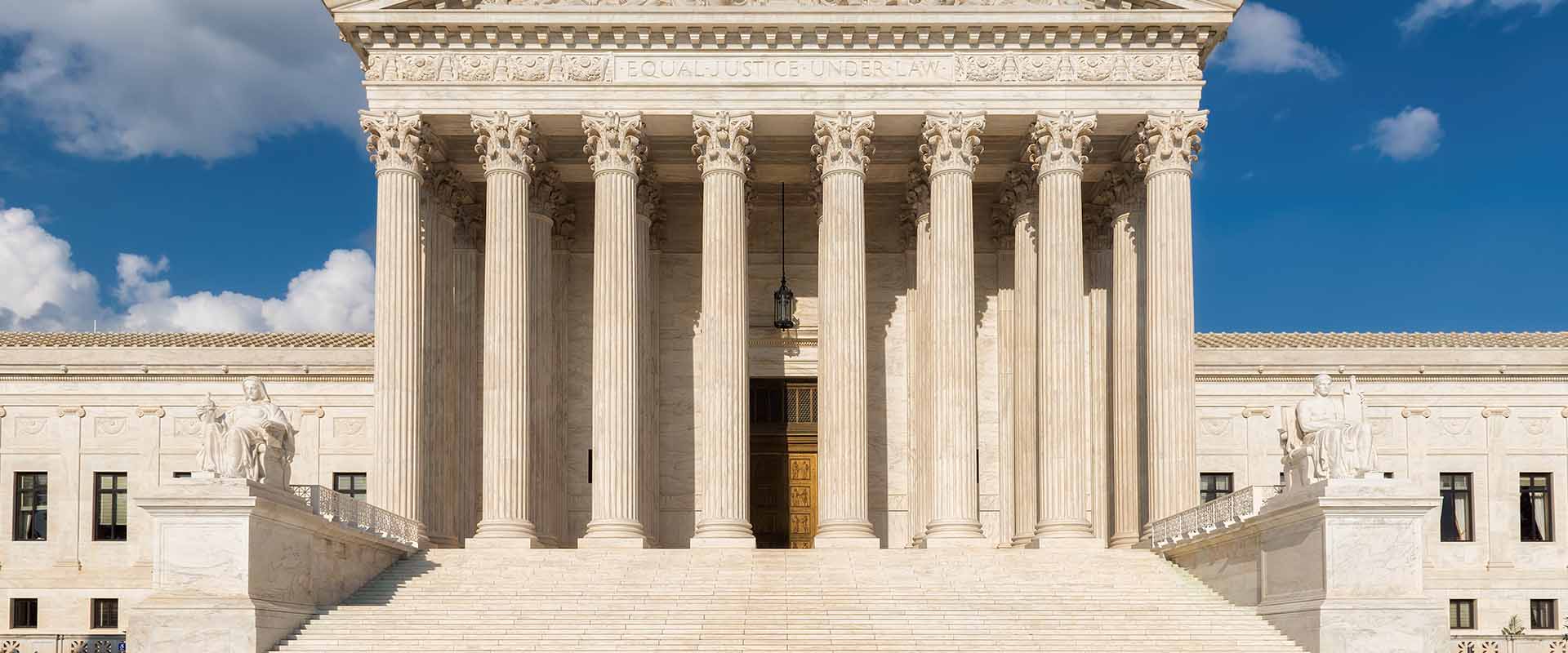Know Your Role, Know Your Risk

June 2019
Number 28
A Civic Center Act provision that allocates liability between a school district and the users of school facilities means what it says, according to a recent decision by the California Court of Appeal. In Grossman v. Santa Monica-Malibu Unified School District, the court found the district was not liable for injuries suffered by a parent-attendee at a carnival held by a booster group at one of the district's schools. The court also highlighted the statute's intent that school districts and users of school facilities bear their own costs in insuring against risk and liability resulting from use of those facilities.
Facilities Use and Liability Under the Civic Center Act
Education Code section 38130 et seq., also known as the Civic Center Act, requires school districts to allow community groups to use district-owned facilities under certain conditions and allocates liability between the school district and the user of those facilities. Under Education Code section 38134(i)(1), "an entity using school facilities or grounds . . . is liable for an injury resulting from the negligence of that entity during the use of the school facilities or grounds," while a school district "is liable for an injury resulting from the negligence of the school district in the ownership and maintenance of the school facilities or grounds." The same section also requires school districts and users to "each bear the cost of insuring against its respective risks," as well as the cost of defense for "claims arising from those risks."
A school district's liability for "ownership and maintenance" of its facilities and grounds only arises when the district would be liable under Government Code section 835 for "a dangerous condition of public property." That form of liability arises from (1) negligent acts of a school district employee, or (2) notice of the dangerous condition with time to mitigate the danger.
The Grossman Case
In Grossman, the school district approved a booster group's plans for a carnival on school grounds, but did not otherwise involve itself in the planning, set up, or oversight of the carnival. At the event, the plaintiff, a carnival attendee, was injured when an inflatable slide collapsed and he fell over 20 feet onto the concrete below. Similar slides were used at prior carnivals without incident.
The plaintiff sued the district, the booster group, and party rental and event companies for negligence. The plaintiff alleged that the slide was improperly set up, and was not secured to the ground with stakes. The plaintiff further alleged that the district did not inspect the slide or make sure that the operators properly assembled the slide.
The court ruled that the negligent set-up and operation of the inflatable slide, rather than any dangerous condition of the district's property, was the cause of the plaintiff's injuries. The slide was not a condition of the school grounds because it was a temporary feature that was removed after the event. Moreover, the district did not have notice of any purported dangerous condition because similar slides had been used at the booster group's carnival in prior years without incident, and no complaints were made about the slide being improperly set up before the incident. Because the plaintiff's claim was based on negligent set-up and operation of the slide, and not on a dangerous condition of the property, the court held that the district could not be liable for negligence under the Civic Center Act.
In its ruling, the court discussed the legislative history of the Civic Center Act's liability apportionment statute. In particular, the court noted objections by booster groups and similar organizations to substantial insurance coverage and indemnification obligations required by school districts for use of facilities under the Civic Center Act. The legislation provided that such costs were considered costs of maintenance and management that should be borne by the property owner, rather than the user, however, the legislative history underscored the Legislature's intent that the Civic Center Act not broaden a school district's liability beyond that narrow scope. The court emphasizes that the liability apportionment statute requires each party bear its own costs associated with protecting against liability.
Takeaways
The Grossman case serves as a good reminder that liability is apportioned based on a school district or user's respective role, as are the costs to protect against that liability, and while a school district cannot shift its statutory liability to facility users, it also cannot be held liable for injuries resulting from the user's negligence, even if the incident occurred on school grounds.
For additional information regarding the Civic Center Act or facilities use and liability, please contact the authors of this Client News Brief or an attorney at one of our eight offices located statewide. You can also subscribe to our podcast, follow us on Facebook, Twitter and LinkedIn or download our mobile app.
Number 28
A Civic Center Act provision that allocates liability between a school district and the users of school facilities means what it says, according to a recent decision by the California Court of Appeal. In Grossman v. Santa Monica-Malibu Unified School District, the court found the district was not liable for injuries suffered by a parent-attendee at a carnival held by a booster group at one of the district's schools. The court also highlighted the statute's intent that school districts and users of school facilities bear their own costs in insuring against risk and liability resulting from use of those facilities.
Facilities Use and Liability Under the Civic Center Act
Education Code section 38130 et seq., also known as the Civic Center Act, requires school districts to allow community groups to use district-owned facilities under certain conditions and allocates liability between the school district and the user of those facilities. Under Education Code section 38134(i)(1), "an entity using school facilities or grounds . . . is liable for an injury resulting from the negligence of that entity during the use of the school facilities or grounds," while a school district "is liable for an injury resulting from the negligence of the school district in the ownership and maintenance of the school facilities or grounds." The same section also requires school districts and users to "each bear the cost of insuring against its respective risks," as well as the cost of defense for "claims arising from those risks."
A school district's liability for "ownership and maintenance" of its facilities and grounds only arises when the district would be liable under Government Code section 835 for "a dangerous condition of public property." That form of liability arises from (1) negligent acts of a school district employee, or (2) notice of the dangerous condition with time to mitigate the danger.
The Grossman Case
In Grossman, the school district approved a booster group's plans for a carnival on school grounds, but did not otherwise involve itself in the planning, set up, or oversight of the carnival. At the event, the plaintiff, a carnival attendee, was injured when an inflatable slide collapsed and he fell over 20 feet onto the concrete below. Similar slides were used at prior carnivals without incident.
The plaintiff sued the district, the booster group, and party rental and event companies for negligence. The plaintiff alleged that the slide was improperly set up, and was not secured to the ground with stakes. The plaintiff further alleged that the district did not inspect the slide or make sure that the operators properly assembled the slide.
The court ruled that the negligent set-up and operation of the inflatable slide, rather than any dangerous condition of the district's property, was the cause of the plaintiff's injuries. The slide was not a condition of the school grounds because it was a temporary feature that was removed after the event. Moreover, the district did not have notice of any purported dangerous condition because similar slides had been used at the booster group's carnival in prior years without incident, and no complaints were made about the slide being improperly set up before the incident. Because the plaintiff's claim was based on negligent set-up and operation of the slide, and not on a dangerous condition of the property, the court held that the district could not be liable for negligence under the Civic Center Act.
In its ruling, the court discussed the legislative history of the Civic Center Act's liability apportionment statute. In particular, the court noted objections by booster groups and similar organizations to substantial insurance coverage and indemnification obligations required by school districts for use of facilities under the Civic Center Act. The legislation provided that such costs were considered costs of maintenance and management that should be borne by the property owner, rather than the user, however, the legislative history underscored the Legislature's intent that the Civic Center Act not broaden a school district's liability beyond that narrow scope. The court emphasizes that the liability apportionment statute requires each party bear its own costs associated with protecting against liability.
Takeaways
The Grossman case serves as a good reminder that liability is apportioned based on a school district or user's respective role, as are the costs to protect against that liability, and while a school district cannot shift its statutory liability to facility users, it also cannot be held liable for injuries resulting from the user's negligence, even if the incident occurred on school grounds.
For additional information regarding the Civic Center Act or facilities use and liability, please contact the authors of this Client News Brief or an attorney at one of our eight offices located statewide. You can also subscribe to our podcast, follow us on Facebook, Twitter and LinkedIn or download our mobile app.
As the information contained herein is necessarily general, its application to a particular set of facts and circumstances may vary. For this reason, this News Brief does not constitute legal advice. We recommend that you consult with your counsel prior to acting on the information contained herein.






